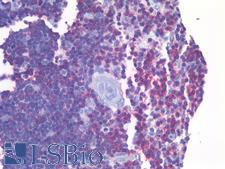Login
Registration enables users to use special features of this website, such as past
order histories, retained contact details for faster checkout, review submissions, and special promotions.
order histories, retained contact details for faster checkout, review submissions, and special promotions.
Forgot password?
Registration enables users to use special features of this website, such as past
order histories, retained contact details for faster checkout, review submissions, and special promotions.
order histories, retained contact details for faster checkout, review submissions, and special promotions.
Quick Order
Products
Antibodies
ELISA and Assay Kits
Research Areas
Infectious Disease
Resources
Purchasing
Reference Material
Contact Us
Location
Corporate Headquarters
Vector Laboratories, Inc.
6737 Mowry Ave
Newark, CA 94560
United States
Telephone Numbers
Customer Service: (800) 227-6666 / (650) 697-3600
Contact Us
Additional Contact Details
Login
Registration enables users to use special features of this website, such as past
order histories, retained contact details for faster checkout, review submissions, and special promotions.
order histories, retained contact details for faster checkout, review submissions, and special promotions.
Forgot password?
Registration enables users to use special features of this website, such as past
order histories, retained contact details for faster checkout, review submissions, and special promotions.
order histories, retained contact details for faster checkout, review submissions, and special promotions.
Quick Order
PathPlusTM LAT Antibodies
LAT (Linker for activation of T cells, pp36) is a protein required for TCR (T-cell antigen receptor)- and pre-TCR-mediated signaling, both in mature T-cells and during their development. It functions in FCGR3-mediated signaling in natural killer cells and FCER1-mediated signaling in mast cells. It serves to couple activation of these receptors and their associated kinases with distal intracellular events such as mobilization of intracellular calcium stores, PKC activation, MAPK activation or cytoskeletal reorganization through the recruitment of PLCG1, GRB2, GRAP2, and other signaling molecules. Mutations in the LAT gene are believed to lead to immunodeficiency-52 (IMD52), characterized by variable autoimmune disorders with recurrent infections starting from infancy, hypogammaglobulinemia, progressive lymphopenia, and also lymphoproliferation with splenomegaly. In immunohistochemistry of normal tissue, LAT has highest membranous and cytoplasmic positivity in megakaryocytes, T-cells, NK cells, mast cells and is found in the thymus and spleen, with low levels of expression in various tissues throughout the body.
References: The UniProt Consortium. Nucleic Acids Res. 47: D506-515 (2019); Nucleic Acids Res. 2016 Jan 4;44(D1):D733-45, PMID:26553804; Cell. 92 (1): 83–92, PMID: 9489702; J. Exp. Med. 213: 1185-1199, 2016. Note: Erratum: J. Exp. Med. 214: 2165 only, 2017, PMID: 27242165; J. Allergy Clin. Immun. 139: 634-642, 2017, PMID: 27522155; Online Mendelian Inheritance in Man. Johns Hopkins University, Baltimore, MD. 2018. MIM Number: 617514;
1 PathPlusTM Antibody

☰ Filters
Products
Antibodies
(1)
Type
Primary
(1)
Target
LAT
(1)
Reactivity
Human
(1)
Application
IHC
(1)
IHC-P
(1)
WB
(1)
IP
(1)
Host
mouse
(1)
Product Group
PathPlus Cancer
(1)
Isotype
IgG1
(1)
Clonality
monoclonal mc
(1)
Clone
LAT1111
(1)
Format
Unconjugated
(1)
Epitope
Cytoplasmic Domain
(1)
Publications
No
(1)

Cancer
LAT Mouse anti-Human Monoclonal (Cytoplasmic Domain) (LAT1111) Antibody
Human
IHC, IHC-P, IP, WB
Unconjugated
50 µg/$460
Viewing 1-1
of 1
product results










